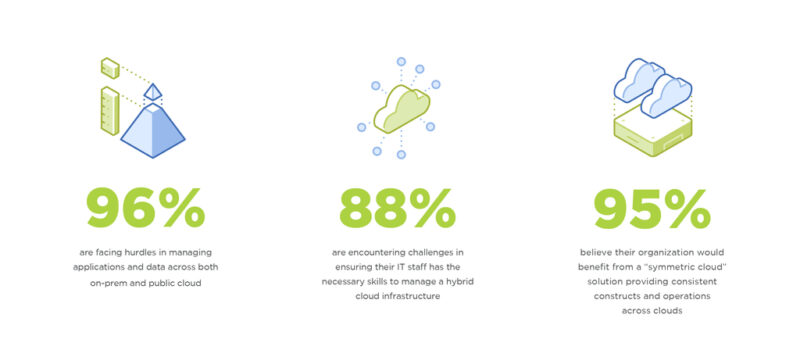
Businesses Need the Flexibility to Use Multiple Clouds, but Lack of Consistent Operations Hinders Them
Bangkok – October 8, 2020 – Nutanix (NASDAQ: NTNX), a leader in enterprise cloud computing, today announced findings of a new report analyzing key challenges and opportunities with hybrid cloud adoption. While most see hybrid cloud as the ideal IT model, the report showed that many struggle to adopt it — with 70% of organizations believing that their transformation is taking longer than expected. However, the goal is clear: nearly all respondents (95%) think their organization would benefit from an optimal hybrid implementation providing consistent IT constructs and operations across multiple clouds, eliminating many of the challenges they currently face ranging from operational silos to staffing shortages.
As businesses everywhere struggle to adapt to a new reality, one thing is becoming even clearer: flexibility is crucial to business success. Whether enterprises need to leverage public cloud to deliver remote desktops quickly, consolidate disaster recovery sites, move workloads to a private cloud to stave off public cloud capacity concerns, or take advantage of on-demand capacity bursting, the current global situation has emphasized the need for an adaptable IT infrastructure for many businesses. But flexibility no longer means using both public and private clouds — it means having a consistent experience, tooling and operational practices across multiple clouds to dramatically simplify the ability to move applications and data to the most appropriate cloud environment.
“Today, modern organizations need to lead with flexibility, and a critical aspect of this is decentralizing resources to make them more readily available,” said Wendy M. Pfeiffer, CIO of Nutanix. “By using multiple clouds, whether public, private or at the edge, businesses can simply bring their IT infrastructure where it is most needed. But, as we saw in the research, this flexibility is only possible with consistent constructs, operations and tooling across multiple clouds, making a hybrid cloud environment ideal.”
The report, commissioned by Nutanix and created by independent market research firm Vanson Bourne, analyzed key challenges businesses are currently facing when managing both public and private cloud infrastructures. The company surveyed 650 IT decision-makers from multiple industries, business sizes and geographies in the Americas; Europe, the Middle East, Africa (EMEA); and Asia-Pacific and Japan (APJ) regions.
Additional findings include:
• Public Cloud Alone is Not Always the Answer: Public cloud revolutionized the IT industry, offering more agility and operational efficiency. And while it’s ideal for some applications and workloads, it’s not for others, leading businesses to embrace a hybrid infrastructure. According to the research, the majority of respondents have concerns about running business-critical applications, those most vital to their business, on public cloud, specifically around reliability (75%), portability (73%), and cost (72%). Additionally, some are simply unable to move their business-critical applications, due to complexity or cost. For example, the need to re-architect or re-platform applications (75%) and the complexity of the migration (71%) are top concerns preventing respondents from porting applications.
• Hybrid Widens the IT Skills Gap: Although many businesses struggle to find enough qualified IT talent, the issue grows when looking for professionals who can manage both a public and a private cloud infrastructure, as currently the two environments require different skill sets. Most organizations (88%) are facing challenges in ensuring their IT staff has the necessary skills to manage a hybrid IT infrastructure, and over half (53%) see this as a top concern.
• Skill Gaps Create Silos and Inefficiencies: Given the different skills required to manage public and private cloud infrastructures, businesses often need to rely on different teams creating silos, something that nearly all (95%) respondents encountered. Most importantly, they often impact the bottom line, something even more concerning at a time when many businesses are focused on optimizing resources. Nearly half of respondents identified resource sprawl (49%), an increase in costs (45%), and/or a waste of resources (43%) as concerns.
• Portability is a Must and Not Just For Applications: For most businesses (88%) software licensing is a key aspect of a hybrid IT infrastructure, as many have run into difficulties surrounding licensing (58%) or vendor lock-in (58%) when moving to public cloud. Additionally, nearly two thirds (65%) are willing to consider subscription licensing for their IT infrastructure.
Businesses are looking for flexibility. It’s no longer a choice between private and public, or between different public cloud providers. Organizations need a solution providing consistent experience, tooling and operational practices across multiple clouds to address many of the challenges and operational inefficiencies they’re currently facing. An optimal hybrid cloud environment provides the consistency they need to take advantage of the full flexibility of multiple clouds, whether private or public.
To read more about the findings, you can access the full report here.




